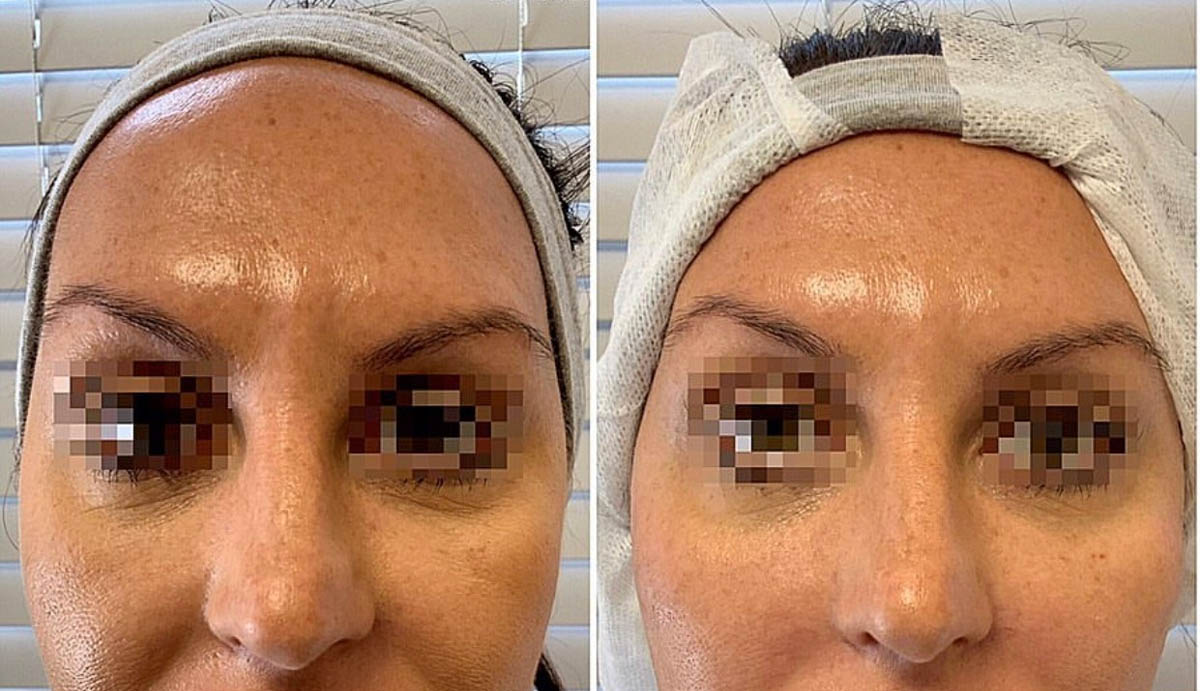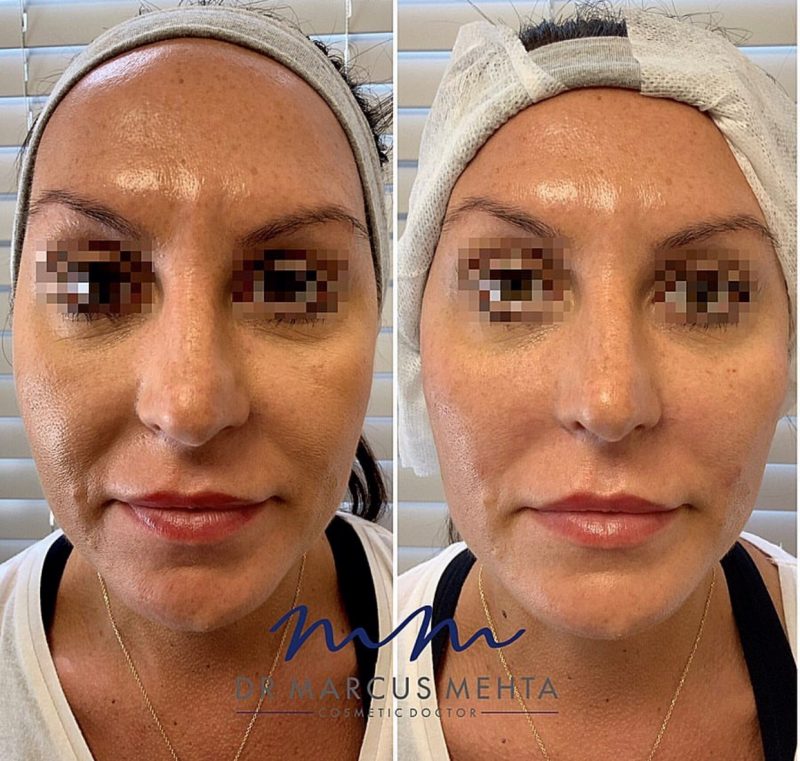Effective results combining tear trough filler and medical-grade skincare.
Effective results combining tear trough filler and medical-grade skincare.
Dr Marcus Mehta shares his approach to treating the under-eye area.
An area that is notoriously hard to treat is the under-eye. It’s a complex area that, in my opinion, requires a multi-modal approach to achieve the best results. The key concerns that my patients express for this region are dark circles, fine lines and loss of volume. I commonly see practitioners jump to perform tear trough filler in isolation as soon as their patient walks through the door with an under-eye concern… but is this treatment alone going to solve all three key issues that affect the aesthetics of this area?
I often see patients with high expectations of achieving instant treatment results due to one-minute videos of misleading ‘before and after’s’ on social media. Education is key to advocate realistic expectations and build holistic treatment plans that promote longevity in results with my patients. A common phrase I hear in consultations when looking at the under-eye area is “I feel that I constantly look tired”. Explaining the root cause behind the features of this familiar complaint equips my patients in making informed choices regarding treatment options and result expectations.
The tear trough is an area between the lower eyelid and the cheek. Interestingly, it is an area that incurs structural changes with the ageing process but also presents in young patients – an assumed genetic predisposition (Berros, et al., 2018). The periorbital skin is some of the thinnest we have and, as a result, can be almost transparent, allowing small blood vessels and pigmentation to stand out and fine lines under the eye to appear worse (Bucay and Day, 2013). These features all contribute to the aesthetics of an ‘ageing face’ coupled with volume depletion in fat pads and increased skin laxity.
Additionally, the repeated expression of emotions produces facial lines such as static orbicularis oculi lines or ‘crow’s feet’ through muscular contraction. Research suggests that the presence of these lines is not only perceived as a sign of ageing but can also mislead perceptions of a person’s emotions or personality traits (Charles Finn, Cox and Earl, 2003). I perform an assessment of this area by getting my patient to smile to see how this area changes with dynamic movement compared to the static appearance at rest.
So, how do I approach effective treatment planning for the eye area?
As a Doctor, it is a good medical practice to expose our patients to the least possible harm. Therefore, when addressing patient concerns, I prefer to adopt conservative management first. Injectables carry inherent risks and pre-treating with skincare allows me to start low risk and improve skin quality before considering injectables. Skincare also enhances the results of injectables.
Pre-treatment/ initial consultation
Pre-treatment with medical-grade skincare to improve the skin’s condition by reducing fine lines and lightening areas of pigmentation achieves all-inclusive results that compliment injectables targeting any volume loss. I also feel that introducing the concept of maintaining or improving a healthy skin barrier function is always in my patients’ best interest.
My strategy for almost all eye area concerns that I see in the clinic is to start them on two skincare products. These are AlumierMD AluminEye™ and AlumierMD Retinol Eye Gel. I recommend the morning and nightly application of AluminEye™ to immediately lighten the appearance of under-eye darkness and puffiness. The inclusion of Matrixyl® Synthe’6® also strengthens the skin and supports its elasticity by increasing the production of collagen and hyaluronic acid.
To reinforce this collagen production, I also advise the nightly application of AlumierMD Retinol Eye Gel with 0.1% microencapsulated retinol to reduce the appearance of fine lines and crow’s feet by stimulating collagen production and increasing cell turnover. This product pairing helps target two of the three key areas of concern expressed by the majority of my patients- fine lines and dark circles.
Treatment
Whether reviewing results from an initial consultation with skincare or initiating tear trough treatment following pre-treatment, my patients are always amazed at the improvement in fine lines under the eye and the general appearance of this area once rejuvenated.
To replace any volume loss, I then move to use a filler carefully placed in the tear trough region with a cannula. It’s an important consideration to use a hyaluronic acid filler that is appropriate for this area to prevent oedema (the collection of fluid in cavities or tissues), so I choose a less hydrophilic filler to reduce the chance of this happening.
In addition, my recommendation would be to always treat this area conservatively and take into consideration that the filler will attract more water over the following weeks. I look for improvement of around 85% on the day of treatment with the remaining correction taking place at follow up appointments in subsequent weeks.
Post-treatment considerations
After treatment with filler, my main aftercare advice revolves around telling the patient to avoid touching the area and avoid applying makeup to reduce the risk of infection. I also recommend that my patients continue to use AlumierMD Retinol Eye Gel and AluminEye™ to maintain the quality and appearance of the periorbital skin between any future treatments. As well as the protection of results, I enjoy the increased touchpoints this treatment plan also provides for my patients and myself.
The eye area is one of the most common areas of concern in my patient group and requires a detailed assessment, whereby my focus always starts with the skin. In my experience, incorporating the two AlumierMD eye products into under-eye treatment plans improve the skin’s condition, including dark circles and fine lines, which are two of the three aforementioned factors influencing the aesthetics of the periorbital area. This allows for a much more effective overall result in this delicate area and promotes patient retention.
REFERENCES
1. Bucay, V. and Day, D. (2013). Adjunctive Skin Care of the Brow and Periorbital Region. Clinics in Plastic Surgery, 40(1), pp.225-236.
2. Berros, P., Armstrong, B., Foti, P. and Mancini, R. (2018). Cosmetic Adolescent Filler. Ophthalmic Plastic and Reconstructive Surgery, p.1.
3. Charles Finn, J., Cox, S. and Earl, M. (2003). Social Implications of Hyperfunctional Facial Lines. Dermatologic Surgery, 29(5), pp.450-455.
Bio
Dr Marcus Mehta is a Medical Doctor and Aesthetic Physician with a postgraduate diploma in Clinical Dermatology. He works from Kirkland Lodge Clinic in his home town of Southwell and is a Director for the UK’s largest aesthetics training school The Harley Academy, based in London. With a passion for empowered education in the aesthetics sector, he is dedicated to teaching medical professionals and offering the general public an educational insight into the industry.






